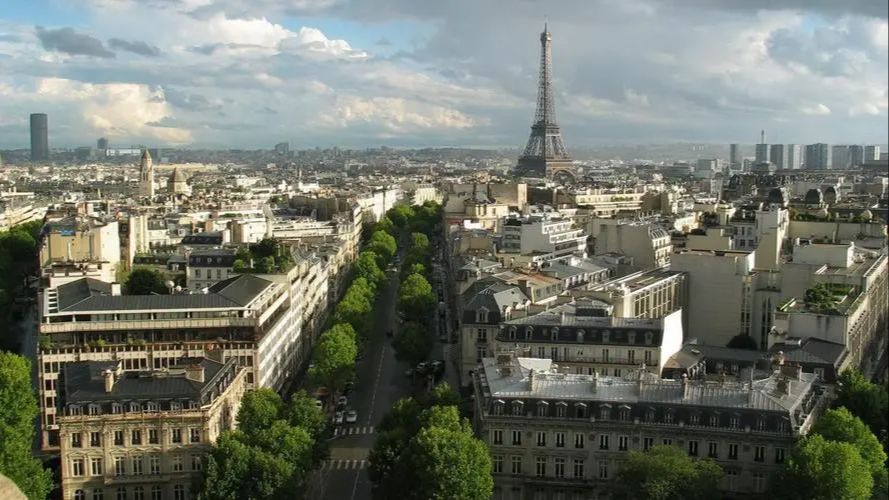
In the 4th century AD, to commemorate the earliest masters of this place, the city was named "Paris." Paris is the center of French culture and education, as well as a world-renowned cultural city. Paris has 50 theaters, 200 cinemas, and 15 concert halls. The Paris Opera House is the largest opera house in the world, located on the Boulevard Haussmann in the city center, covering an area of 110,000 square meters, with a blend of Gothic and Romanesque architectural styles. The National Conservatory of Music and Dance is also located here.
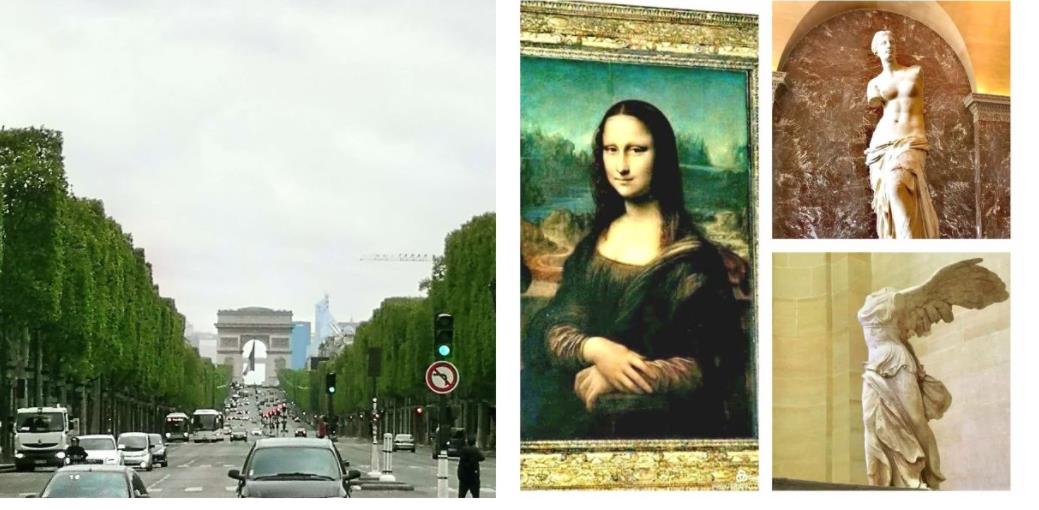
Paris is a world historical city, filled with famous landmarks: the Eiffel Tower, the Arc de Triomphe, the Élysée Palace, the Palace of Versailles, the Louvre, Place de la Concorde, Notre-Dame Cathedral, and the Centre Pompidou, among others, are places where domestic and international tourists linger. The beautiful banks of the Seine River are dotted with parks and green spaces, and 32 bridges span the river, enhancing the picturesque scenery. The Île de la Cité in the center of the river is the cradle and origin of Paris.
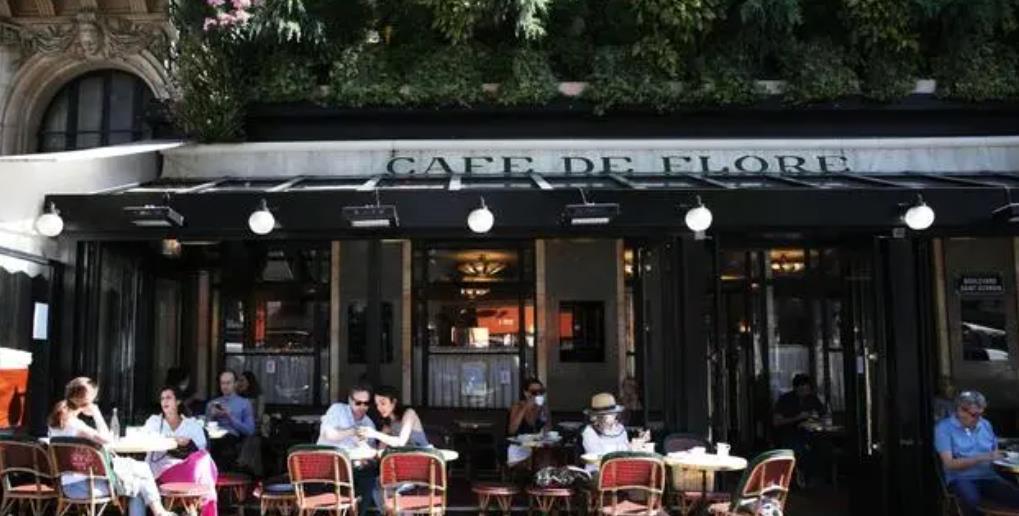
Drinking coffee at the Café de Flore in Paris
Paris is also a "world conference city." With its bright scenery, rich historical sites, colorful cultural activities, and modern service facilities, it has hosted numerous international conferences. According to statistics, in 1987, Paris held 365 international conferences, surpassing New York, London, Brussels, and Geneva, ranking first in the world. The headquarters of international organizations such as UNESCO and the OECD are located in Paris.
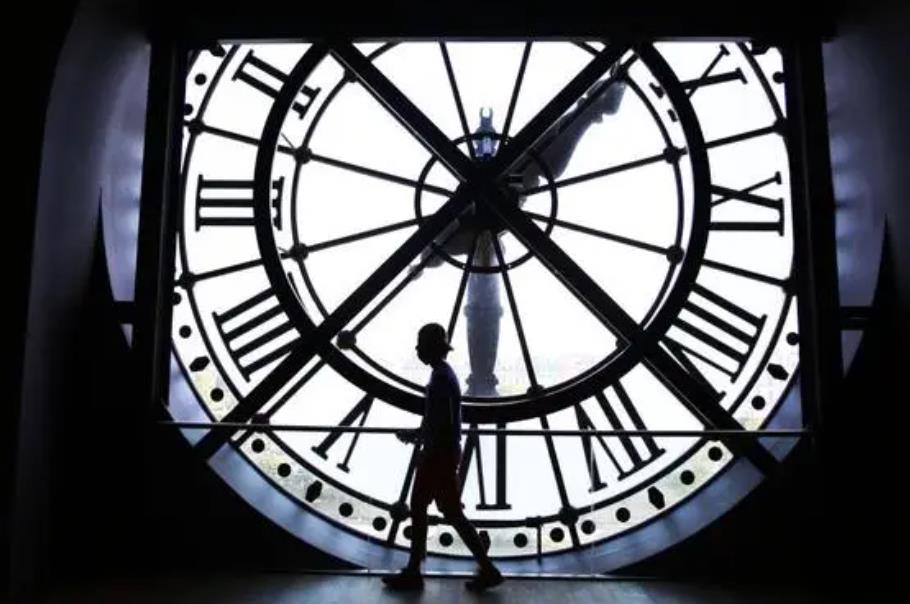
The large clock on the top floor of the Musée d'Orsay in Paris (taken on June 23, 2020)
There is a well-known saying in France: "Paris is not built in a day." Specifically, the city of Paris has 20 districts, with over 5,000 streets, roads, and boulevards. The distinct architecture in the east, west, south, and north of the city makes it easy for pedestrians to accurately determine their location within the city.
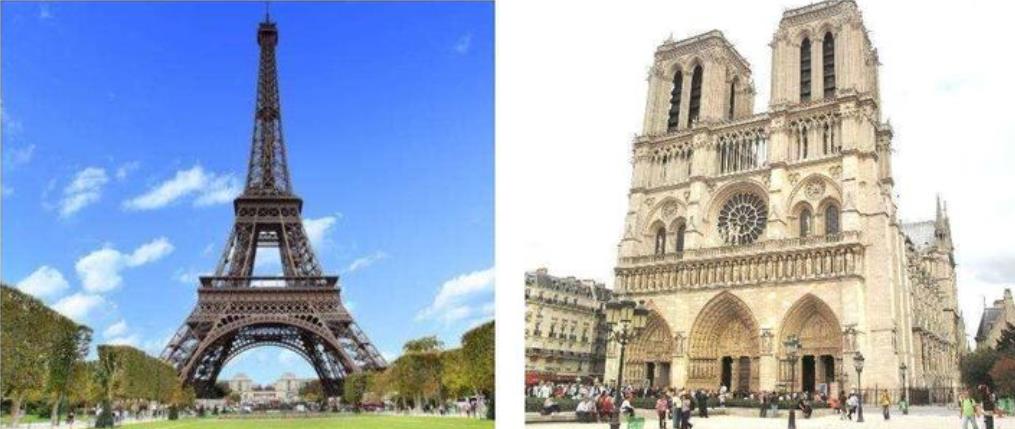
Paris, with its domed churches, Arc de Triomphe, grand palaces, magnificent squares, royal parks, and millions of twinkling lights every night, has become the center of France. The 300-meter-high Eiffel Tower, which was criticized over a hundred years ago as "regrettable and useless," was later embraced and has become a symbol of Paris.
When in Paris, one must enjoy the beautiful views of the city. From Notre-Dame, the Arc de Triomphe, and Montmartre, the stunning scenery of Paris is at your feet. Of course, the most delightful view is from the Eiffel Tower, which stands like a steel giant on the banks of the Seine River in the city center.
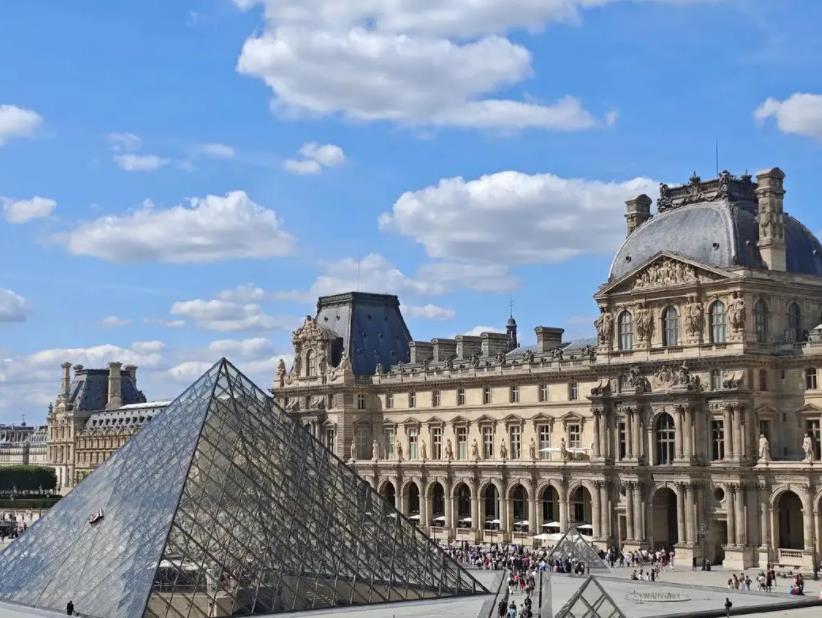
The Louvre
The city of Paris has 70 museums, allowing the artistic atmosphere to permeate your soul, each one being exciting and unique. The world's largest Louvre, located on the right bank of the Seine, is famous for its rich collection of classical paintings and sculptures, and is one of the most precious buildings from the French Renaissance. The Musée d'Orsay, which houses artworks from the late 18th century to the early 19th century, also captivates visitors, even though it was originally converted from a train station; while the Musée de l'Orangerie showcases works from the Impressionist movement of the late 19th century, and of course, there are also the Picasso Museum, the Musée de Cluny, the Rodin Museum, and so on. Visiting Paris truly feels like entering the realm of art!
France has a temperate maritime climate, with mild winters and cool summers, and is humid and moist year-round. According to meteorological data from the past 30 years, the average maximum temperature in Paris in July and August does not exceed 25°C, and extreme weather is very brief. Additionally, in some European countries, there are strict requirements for installing air conditioning outdoors. For example, in France, installing air conditioning is considered a "modification of the visible exterior walls of public spaces," requiring the consent of co-owners and permission from the property management committee. Furthermore, factors such as high electricity and labor costs mean that, overall, France has not needed to install air conditioning to cope with summer for a long time.
Two years ago, the Paris Organizing Committee promised the world that this Olympic Games would be the greenest, lowest carbon, and most environmentally friendly in history, with carbon emissions expected to be reduced by more than half compared to the 2012 London Olympics and the 2016 Rio Olympics. In terms of catering, the Paris Organizing Committee is also committed to reducing carbon emissions. Six different dining areas will offer cuisine from around the world, providing 60,000 meals daily, with more than half of the 50 dishes offered each day being vegetarian, aiming to reduce the carbon footprint of each meal by half.
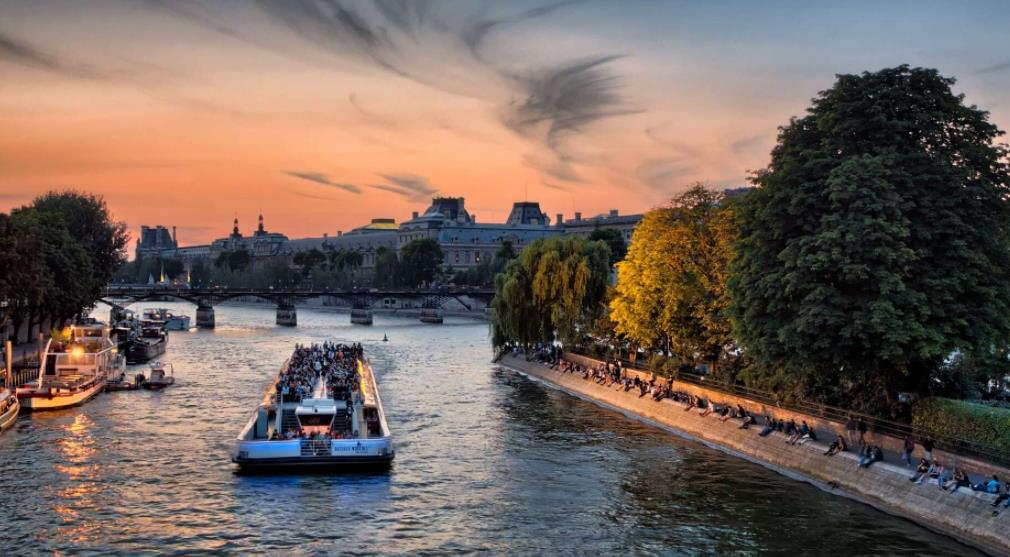
In terms of transportation, the Paris Organizing Committee will use fully electric shuttles for athletes' travel. To promote "green travel," the Île-de-France region where Paris is located will build a 400-kilometer Olympic cycling lane for this Olympic Games, aiming for a "100% bikeable" goal.
Additionally, Paris is equipped with 46,000 shared bicycles and has deployed 27,000 bicycle parking spaces, of which 10,000 spaces and some bike lanes will be permanently retained as part of the Olympic legacy to contribute to energy saving and carbon reduction.
After the Tokyo Olympics, various countries have continued and drawn on the "minimalist" approach and style, indicating that from the perspective of reducing carbon emissions and avoiding overcapacity, this is a major trend for hosting large-scale events in the future. The simple, exquisite, refreshing, and environmentally friendly Olympic Games allow the event to fully integrate with the city, giving athletes more opportunities to appreciate and understand the city's scenery, and it has its own style, leaving a deep impression.

Top ten medal standings of the Tokyo Olympics
Looking back at the closing ceremony of the 32nd Summer Olympic Games held in Tokyo, Japan, on August 8, 2021. That day, the closing ceremony held at the New National Stadium in Tokyo marked the end of the most special Olympic Games in history. For the host country, the Olympics did not achieve the economic effects it once sought. Instead, it now bears a bill of $15 billion, double its initial expectations. Fortunately, the Olympics did not turn into a super-spreader event, but the daily new COVID-19 cases in Tokyo continued to rise during the event, still putting considerable psychological pressure on participants. In the end, the Chinese delegation ranked second in the medal standings with 38 gold, 32 silver, and 18 bronze medals, matching its best performance in overseas competitions at the London Olympics. The U.S. team won 3 gold and 2 silver medals on the last day of competition, finishing first in the medal standings with 39 gold, 41 silver, and 33 bronze. The host country, Japan, ranked third, winning 27 gold, 14 silver, and 17 bronze, achieving its best historical performance.
Unlike the opening ceremony, at the closing ceremony, athletes from various countries/regions did not enter in order, but broke boundaries and gathered together, speeding up the process of the closing ceremony. Many athletes were seen taking selfies during this ceremony. Many athletes also cooperated with the organizers, turning on their phone flashlights to create a small light show.
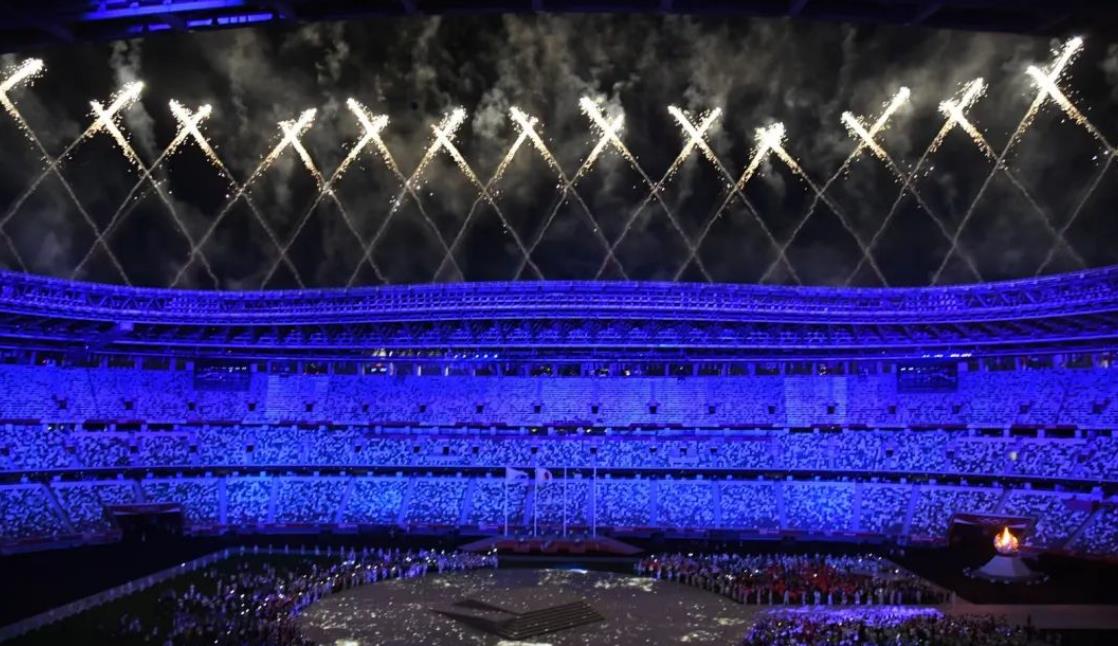
The countless light points forming the giant Olympic rings seen on television were particularly stunning, but this was actually a CG effect that could only be seen on the screen; the audience on-site could not see it. The New York Times commented that it is hard to imagine that at an ordinary Olympic Games where spectators buy tickets to enter, the organizers would do this.
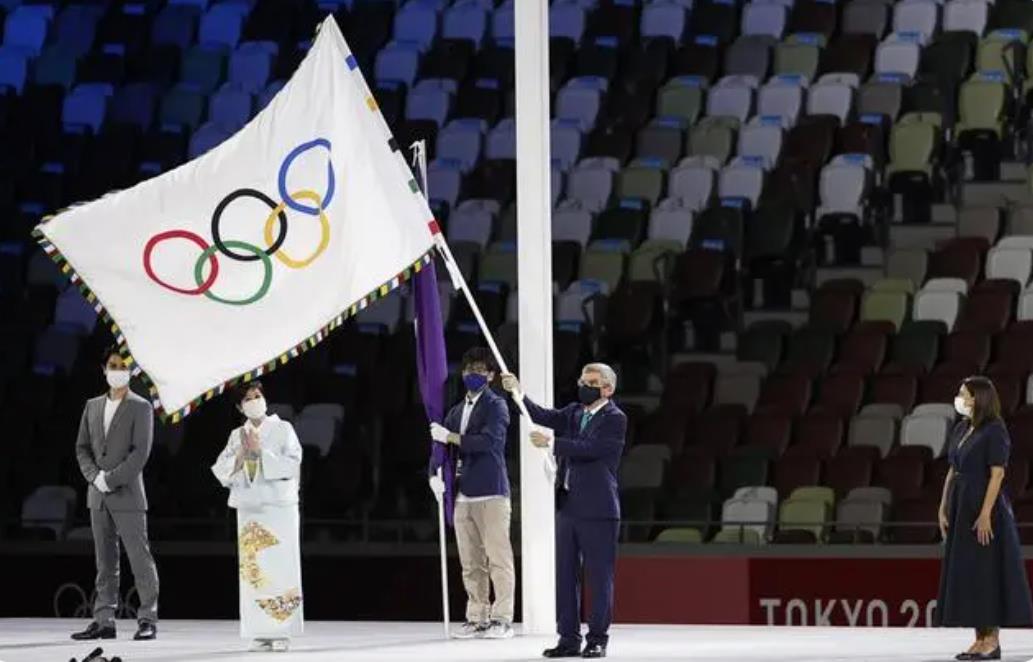
This is the International Olympic Committee President Bach (second from right), Tokyo Governor Koike Yuriko (second from left), and Paris Mayor Hidalgo (first from right) at the flag handover ceremony during the closing ceremony (taken on August 8).
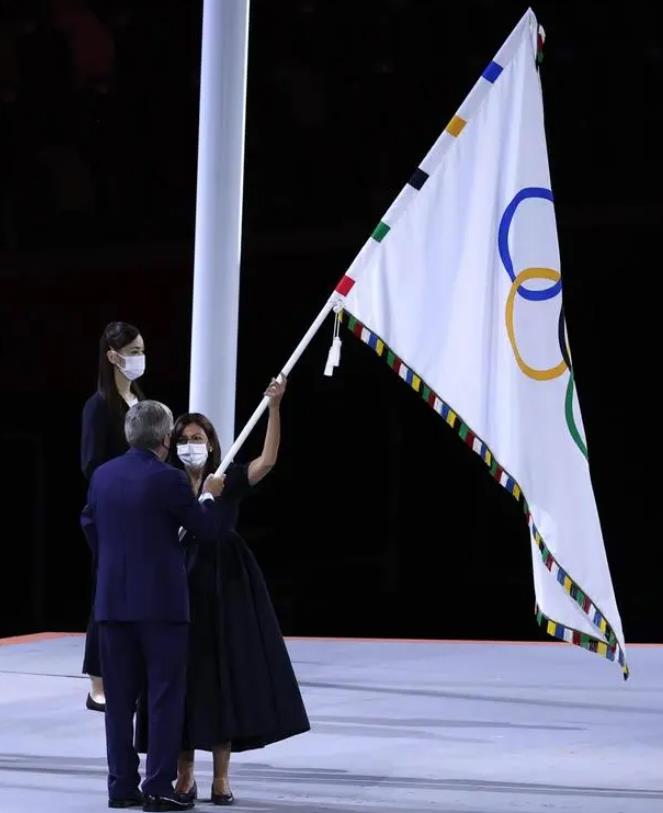
International Olympic Committee President Bach and Paris Mayor Hidalgo at the flag handover ceremony during the closing ceremony (taken on August 8).
